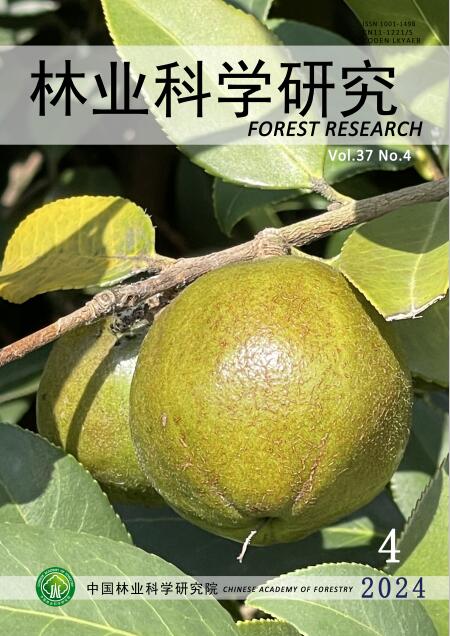Perspectives of Branching Pattern and Branching Density in 30 WoodyTrees and Shrubs in Tamulipan Thornscrub, Northeast of Mexico
Q4 Agricultural and Biological Sciences
引用次数: 6
Abstract
In the context of the ecological perspectives, there is growing attention in the modelling of the morphological structure of the plants for developing the model of the functional processes of plants. The branching pattern functions as solar panel in the capture of solar radiation for the production of biomass and timber. The present study undertaken with the objective of determining the density of branching and types of branching of 30 tree species (trees and shrubs of Tamaulipan thorn scrub such; Helietta parvifolia, Sargentia gregii, Guaiacum angustifolium, Ebenopsis ebano, Harvadia pallens, Condalia hoockeri, Zanthoxylum fagara , Cordia boissieri, Acacia berlandieri, Diospyros texana, Celtis pallida, Forestiera angustifolia, Diospyros palmeri, Parkinsonia texana, Acacia farnesiana, Sideroxylon celastrina, Caesalpinia mexicana, Karwinskia humboldtiana, Croton suaveolens, Amyris texana, Leucaena leucocephala, Ehretia anacua, Gymnosperma glutinosum, Celtis laevigata, Acacia rigidula, Acacia shaffneri, Eysenhardtia polystachya, Prosopis laevigata, Bernardia myricifolia and Leucophyllum frutescens located at the experimental field of Forest Science Faculty of Autonoma de Nuevo en Linares, N.L., Mexico has shown a large variability in the density and branching patterns. The types of branching observed are; monopodial, pseudomonopodial, and sympodial. The branching density observed through animation photography in the field has revealed the presence of three types branching density i.e., high, medium and low density. There existed differences in height, biomass, basal trunk, the angle of the primary and secondary branches. With respect to branching density, a higher number of species were high density (15 species), followed by low density (9) and medium density (5 species). The architecture of the tree is the result of the activity of the apical and axial meristems. This model is a strategy for occupying the space and capture of solar radiation.墨西哥东北部Tamulipan thorn灌丛30种木本乔木的分枝格局和分枝密度研究
在生态学视角的背景下,植物形态结构的建模为建立植物功能过程的模型越来越受到关注。分支模式的功能是作为太阳能电池板,用于捕获用于生产生物质和木材的太阳辐射。本研究的目的是确定30种树种的分支密度和分支类型(塔毛利潘刺灌丛的树木和灌木,如;细叶莲子、绿根草、愈创木、绿叶莲子、黄叶莲子、花椒、白叶金合欢、蓝叶金合欢、德克萨斯金合欢、苍耳金合欢、德克萨斯金合欢、墨西哥金合欢、洪堡金合欢、藜豆、德克萨斯金合欢、白花金合欢、金合欢、金合欢、金合欢、金合欢、金合欢、金合欢、金合欢、金合欢、金合欢、金合欢、金合欢、金合欢墨西哥新利纳瑞斯自治大学森林科学试验田的沙夫金合欢(Acacia shaffneri)、多staachtia、Prosopis laevigata、Bernardia myricifolia和Leucophyllum frutescens在密度和分枝模式上表现出较大的变异。观察到的分支类型有;单足,假单足和联合足。通过野外动画摄影观察到的分支密度显示出高、中、低三种分支密度的存在。在高、生物量、基干、主次枝角度等方面存在差异。分支密度方面,密度高的种数最多(15种),其次是低密度(9种)和中密度(5种)。树的结构是顶端和轴向分生组织活动的结果。这个模型是一种占领空间和捕获太阳辐射的策略。
本文章由计算机程序翻译,如有差异,请以英文原文为准。
求助全文
约1分钟内获得全文
求助全文
来源期刊

林业科学研究
Environmental Science-Ecology
CiteScore
0.90
自引率
0.00%
发文量
4834
期刊介绍:
Forestry Research is a comprehensive academic journal of forestry science organized by the Chinese Academy of Forestry. The main task is to reflect the latest research results, academic papers and research reports, scientific and technological developments and information on forestry science mainly organized by the Chinese Academy of Forestry, to promote academic exchanges at home and abroad, to carry out academic discussions, to flourish forestry science, and to better serve China's forestry construction.
The main contents are: forest seeds, seedling afforestation, forest plants, forest genetic breeding, tree physiology and biochemistry, forest insects, resource insects, forest pathology, forest microorganisms, forest birds and animals, forest soil, forest ecology, forest management, forest manager, forestry remote sensing, forestry biotechnology and other new technologies, new methods, and to increase the development strategy of forestry, the trend of development of disciplines, technology policies and strategies, etc., and to increase the forestry development strategy, the trend of development of disciplines, technology policies and strategies. It is suitable for scientists and technicians of forestry and related disciplines, teachers and students of colleges and universities, leaders and managers, and grassroots forestry workers.
 求助内容:
求助内容: 应助结果提醒方式:
应助结果提醒方式:


